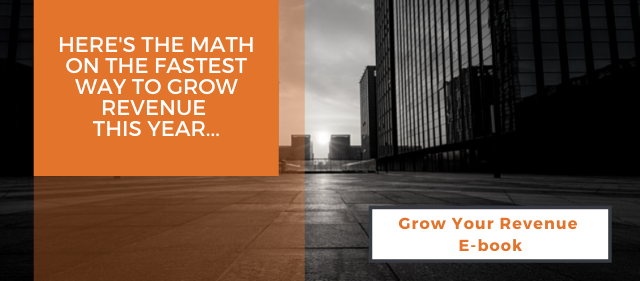SHARE
What Is Digital Marketing and How Does It Increase Your Profit?

Digital marketing is how you use online channels – like your website, search engines, email, and social media – to attract the right people, answer their questions, and guide them to a sale. Done well, it increases profit by lowering your cost per lead, improving conversion rates, and encouraging customers to buy from you again and again.
FAQ: Digital Marketing and Profit
Q1. What is digital marketing in simple terms?
Digital marketing is promoting your business online using channels like search, email, social media, and your website to reach people who are already looking for what you sell.
Q2. Is digital marketing the same as social media marketing?
No. Social media is one part of digital marketing. A full digital strategy also includes your website, SEO, email marketing, online ads, and marketing automation.
Q3. Can digital marketing and traditional print marketing work together?
Yes. Digital and print work best together – print builds awareness while digital captures interest, tracks behaviour, and turns that interest into measurable sales.
Q4. How does AI change digital marketing?
AI speeds up content creation, personalizes messages at scale, and analyzes data faster so you can see what's working and quickly improve underperforming campaigns.
Q5. How long does it take to see results from digital marketing?
You can see early signs of improvement (like more traffic or opens) in weeks, but strong, compounding revenue results usually build over 3–12 months of consistent effort.
Why Digital Marketing Matters for Your Bottom Line
Digital marketing is powerful because it connects you with your best-fit buyers where they already spend their time: online. Instead of pushing a generic message out to everyone, you can:
-
Focus on people who are actively researching your product or problem.
-
Track exactly which channels and campaigns generate revenue.
-
Reuse your content across formats (blog, email, social, video) instead of starting from scratch every time.
-
Adjust quickly when something isn’t working – without reprinting thousands of brochures.
It’s also a natural partner to inbound marketing, where you attract customers with helpful content instead of cold calls and spam. When your website, SEO, and emails answer real questions, your prospects arrive already warmed up and more ready to buy.
Where Digital Marketing Actually Happens (and How Each Channel Makes You Money)
1. Your Website: The Digital Storefront
Your website is still the centre of digital marketing. Every email, social post, and ad should lead people back to a page that helps them take the next step: book a call, request a quote, or buy.
A strong website:
-
Speaks clearly to your best-fit personas (not “everyone”).
-
Uses simple, persuasive copy instead of jargon.
-
Guides visitors down clear conversion paths: CTA → landing page → form → thank you page.
-
Is built for ongoing improvement, not a “set it and forget it” launch.
If your website isn’t built to support this process, consider a growth-driven design approach or structured website design packages so your site becomes a real sales tool, not just an online brochure.
2. Search & SEO: Being Found When Buyers Are Ready
Search engine optimization (SEO) is how you make sure your content shows up when people type (or say) things like “best CRM for manufacturers” or “how to improve sales process.”
Today that includes:
-
Traditional search (Google/Bing).
-
AI-assisted answers and overviews.
-
Voice search (“Hey Google…”).
-
Visual search (camera-based searches).
Good SEO means:
-
Using plain-language phrases your audience actually searches.
-
Organizing your content into core topics and supporting subtopics.
-
Making sure every important page has one clear focus, a strong headline, and a helpful answer.
The payoff: higher visibility with people who are already halfway through their buying journey – and more qualified leads reaching out to you.
3. Social Media: Real-Time Engagement and Reputation
Social media isn’t just for brand awareness anymore. Used well, it can:
-
Put your content in front of the right people quickly.
-
Show the personality and values behind your brand.
-
Act as a customer-service channel where you respond to questions and concerns in real time.
4. Email Marketing: Talking to Highly Engaged Leads
Email is still one of the highest-ROI digital marketing channels because everyone in your list has already said, “Yes, I want to hear from you.”
With email you can:
-
Nurture different personas with tailored content.
-
Send timely follow-ups when someone downloads a resource or views a pricing page.
-
Move people from “just researching” to “ready to book a call” with low-pressure, helpful content.
Because of anti-spam laws, you’re talking to people who chose to be there – which makes your sales conversations warmer, shorter, and more successful.
5. Marketing Automation & CRM: Doing More With Less
Once your channels are in place, marketing automation connects them. For example:
-
A visitor downloads a checklist → they’re added to a nurture sequence.
-
They click a pricing link → a task is created for sales to follow up.
-
They book a call → they move to a different stage in your pipeline.
Tools like HubSpot keep your contacts, marketing, sales activity, and service tickets in one place so teams can see the full customer journey and stop working in silos.
Ready to Connect Digital Marketing to Sales Growth?
If you already have HubSpot or want an inbound marketing agency and sales growth partner to set up your digital system for you, explore Inbound Marketing and Sales with Tangible Words
How AI Makes Digital Marketing More Efficient (and Cheaper)
AI doesn’t replace your strategy – it accelerates it.
Here’s what AI is especially good at:
-
Drafting content: First-draft blogs, emails, social captions, and video scripts that your team can refine.
-
Repurposing assets: Turning one webinar into multiple blog posts, clips, and email sequences.
-
Analyzing behaviour: Spotting patterns in who converts, what they read, and which campaigns underperform.
-
Personalization at scale: Adjusting subject lines, images, or offers based on segment without hand-writing every variation.
The result: your team spends less time staring at a blank page and more time on strategy, creative choices, and sales conversations.
What Can a Digital Marketing Agency Do That Your Team Can’t (Yet)?
Your in-house marketing team absolutely can learn digital marketing – but they may not have the time, tools, or experience to:
-
Design a full funnel from first touch to closed-won.
-
Build personas, nurturing paths, and conversion points that align with your sales process.
-
Configure and maintain platforms like HubSpot so marketing, sales, and service all work from the same data.
A digital marketing agency can:
-
Set up your systems and campaigns correctly the first time.
-
Transfer that knowledge to your team so they can run day-to-day activities.
-
Act as an extended team during busy seasons or when you want to tackle bigger growth goals.
Think of it as renting a full-growth team (strategists, writers, designers, developers, RevOps specialists) at a fraction of the cost of hiring them all in-house.
Actionable Steps: How to Start Using Digital Marketing to Increase Profit
You don’t need to do everything at once. Start with a simple, profitable foundation:
-
Clarify your best-fit customers.
-
Write down 2–3 core personas: their role, key problems, and what “success” looks like for them.
-
-
Audit your website for one clear goal.
-
Choose the main action you want visitors to take (book a demo, request a quote, join your email list) and make that the hero CTA on your key pages.
-
-
Create one helpful core resource per persona.
-
Examples: a checklist, short guide, or webinar that solves a common problem.
-
Gate it behind a simple form to start building your email list.
-
-
Build a short email nurture sequence.
-
3–5 emails that:
-
Thank them for downloading.
-
Share 1–2 more helpful insights.
-
Invite them to talk to sales or see a demo.
-
-
-
Set up basic tracking.
-
Use your CRM/marketing platform to track:
-
Traffic to your key pages.
-
Form submissions.
-
Email opens and clicks.
-
Deals created from these contacts.
-
-
-
Repurpose each resource in at least 3 ways.
-
Turn it into:
-
A blog post.
-
A series of social posts.
-
A short video or carousel.
-
-
-
Review and optimize monthly.
-
Ask: what’s getting clicks but not conversions? What’s converting well that we can promote more?
-
Use AI tools to brainstorm new angles and rewrite underperforming pieces instead of starting from zero.
-
If you already use HubSpot, you can centralize nearly all these steps inside one platform – CRM, email, workflows, landing pages, and reporting – instead of juggling multiple disconnected tools.
Want Help Turning Digital Marketing Into Measurable Sales Growth?
Digital marketing works best when it’s tied directly to your sales process and supported by the right tools, content, and reporting.
If you’d like a partner to:
-
Map your revenue process.
-
Set up or optimize HubSpot.
-
Build campaigns that attract, nurture, and close better-fit customers…
Talk to Tangible Words about your HubSpot and digital marketing needs.
Sales Growth and Digital Marketing Go Hand in Hand. Find out How So You Can Reach Your Profit Goals
This article was prepared by the Tangible Words team – an inbound growth agency and HubSpot Partner Agency focused on sales growth, inbound marketing, and growth-driven websites.
Topics
- Content Creation (297)
- Growth-Driven Design Websites (167)
- Inbound Marketing (144)
- Sales Growth (133)
- Tangible Words (111)
- Search Engine Optimization (85)
- Social Media Marketing (83)
- Blogging for Business (75)
- Hubspot (75)
- Economic Development (64)
- Events & Training (60)
- Company Growth Podcast (49)
- Manufacturing (47)
- Tourism (46)
- Email Marketing (42)
- Case Stories (40)
- Testimonials & Client Feedback (36)
- Education and SaaS (23)
- Google (21)
- Careers (19)
- Inbound Marketing Agency (19)
- Cool Companies (18)
- FAQ (16)
- Alysha Dominico (13)
- Associations (7)
- Food and Beverage (7)
TW Blog Sign-Up
Learn more about how to grow your business and improve your sales team process.









